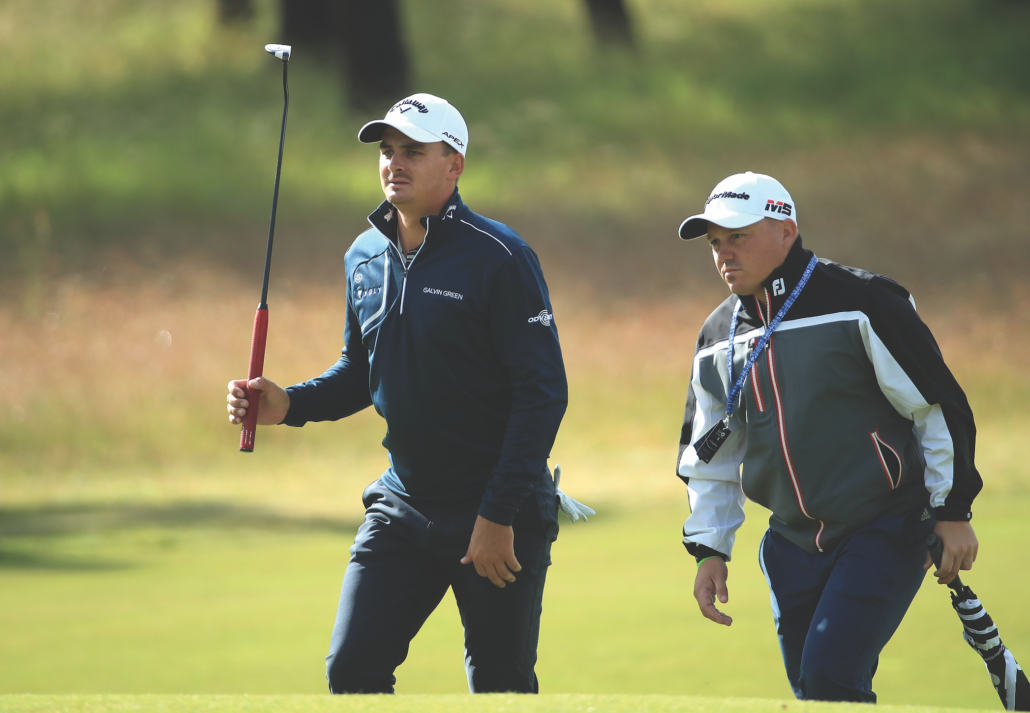To some people a swing instructor will often look to fix something that is not broken, writes GARY LEMKE.
In 2015 I played a round at the Castle Course, which forms part of the St Andrew Links, while on a trip to that year’s Open Championship which was staged on the nearby Old Course of St Andrews. The day before we had been given a two-hour lesson on the driving range by Claude Harmon III, one of the world’s most renowned swing instructors.
‘I haven’t seen a swing like yours in a long time,’ he told me. I know what he meant, but for reasons relating to my ego I’ll bank it as a compliment rather than a criticism; nudge, nudge, wink, wink.
However, I marvelled at the way he went from individual to individual and had different advice for each person. For the next hour we all practised what he had told us. Hand on heart, we all actually hit the ball better in the wind on the links course the next day, thanks to that ‘lesson’.
Over dinner that night he said: ‘Swing coaches get hired to get fired. It’s not a job for life with the same individual. At the beginning, they love you because you care so much about them, are always around and talk about them a lot. When they let you go, it’s because you want them to practise more and you talk too much. Most of the time you get fired by the managers or agents, but one person who called me to say he wanted a change was Ernie Els. I have the utmost respect for him, he’s a great man.’
To some people a swing instructor will often look to fix something that is not broken. After all, if you’re not going to change things in the golfer’s swing, what is the point of them hiring you, or you working for them?
Harmon suggested, however, that it’s also about ‘being there’ for the golfer, sort of a confidant or sounding board, similar to what Gary Kirsten was to Sachin Tendulkar during his stint at India. Also, can you imagine a coach coming in and telling Virat Kohli to change his stance, or make an alteration to the way he grips his bat?
But golf is different and the mental side is a major part, as is confidence and total belief in what you are doing with your swing.
Grant Veenstra, a former Sunshine Tour professional who has established his own golf academy at Ebotse Links, recently had his first European Tour success as a swing coach when Christiaan Bezuidenhout won the Andalucia Masters.
He is now also instructor to six-time European Tour winner Richard Sterne and Justin Harding, whose rise up the World Rankings has had him go from 712th at the end of 2017 to inside the top 50. All three competed at The Open Championship at Royal Portrush.
‘I have really enjoyed working with these players,’ Veenstra says. ‘They are so talented. Coaching technique is one thing, but knowing how to make your player tick and building him up just before game day is something I enjoy.’
He’s been working with Harding since early 2019 and Sterne since late 2018, while Bezuidenhout came on board mid-2018. ‘As an instructor my goals with these professionals were to identify the areas of concern and then get them into a maintenance plan as quickly as possible,’ Veenstra says. ‘All we are trying to achieve is to keep it simple and make sure they do the same drills each day, which removes the guesswork and creates consistency.’
When put like that it can sound like golf is a simple game. Perhaps it is, but if it is to the top professionals, it’s because of the input of a swing coach who allows them to see it as such. For the majority of us mortals it’s often a case of playing army golf: left, right, left, right.







